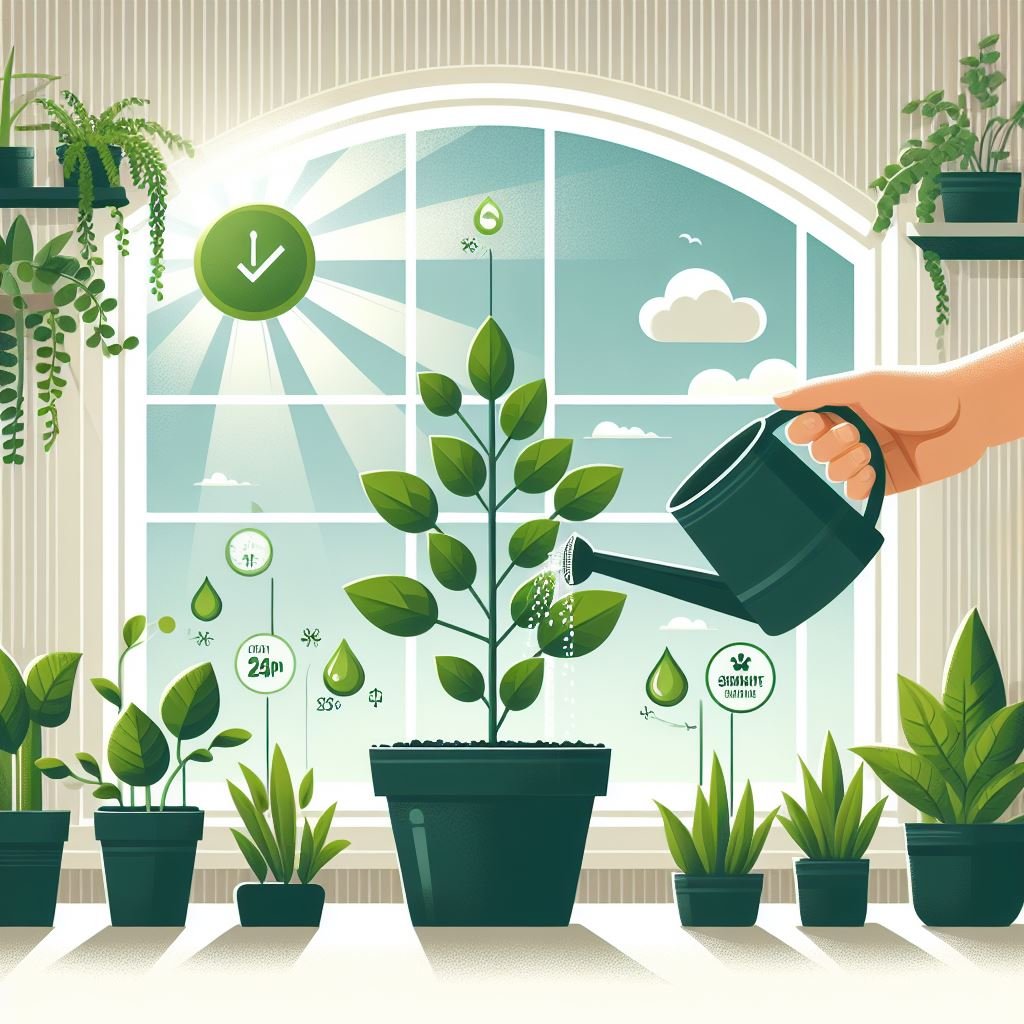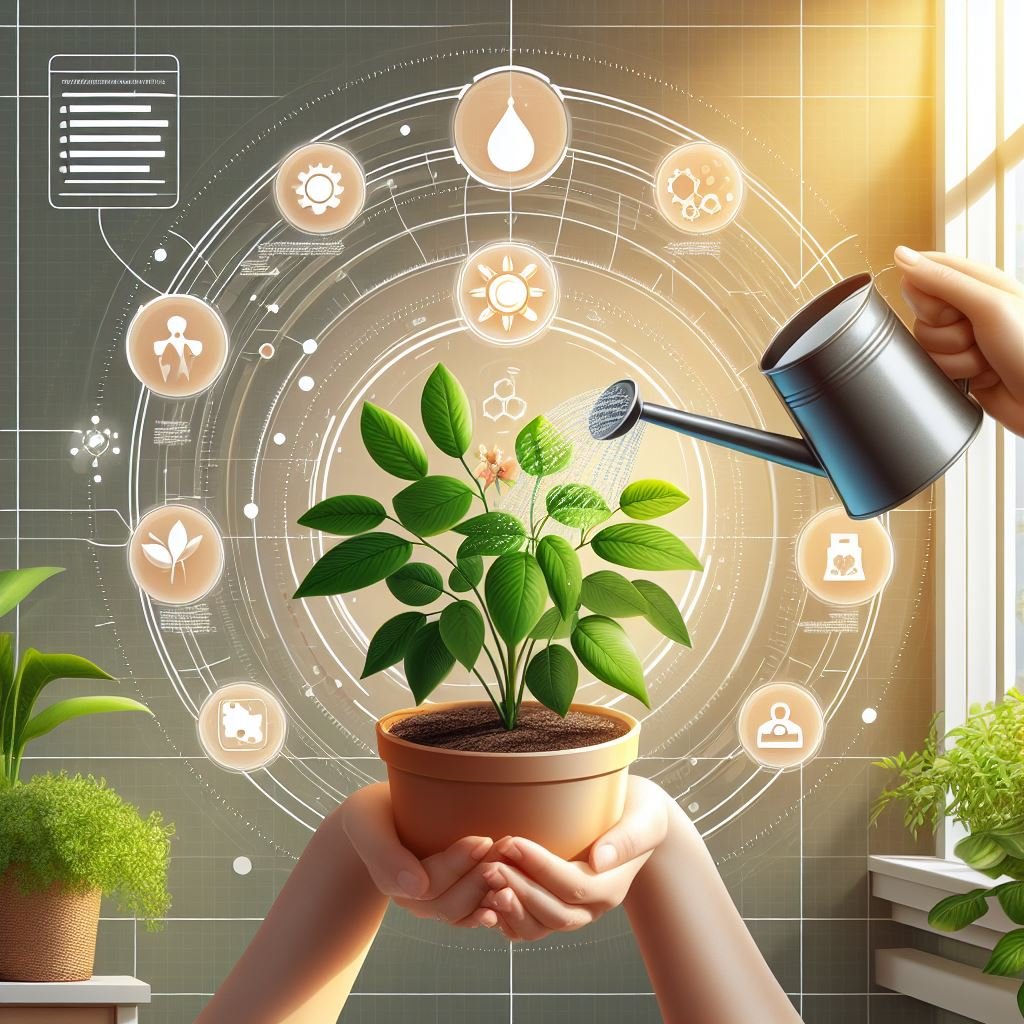Do you have trouble keeping your plants healthy and alive? Are you unaware of how to take care of plants? Don’t worry, you’re not alone. Many people find it difficult to maintain the health of their indoor or outdoor plants. However, with the right knowledge and techniques, you can learn how to take care of plants like an expert in no time.

Understanding Your Plants
- Identifying Plant Types :Now let’s see what you know about indoor plants. Examine everything that you own. Are these plants succulents in bloom, or do they grow in another way? Understanding this enables you to respond to their particular needs. For survival, succulents may require less light than flowering plants, which may require more. Establishing a clear framework makes it easier to create the ideal atmosphere for their growth. Having a thorough understanding of your plants also facilitates problem-solving with them. Thus, spend some time getting to know your green friends and watch how your indoor garden flourishes with a little extra care.
Assessing Plant Needs
- Light Requirements: Let’s talk about indoor plant lighting now. Take a first look around your room. Is there a lot of sunlight or is it mostly cloudy? This is important since different plants have different needs. Some plants, like spiders and pothos, love that indirect sunshine, but others, like snake plants, become chilled in low light. If there’s not enough natural light where you are, don’t worry! You can always bring in some LED grow lights for your plants to give them that extra push. Thus, your indoor garden will thank you with copious, joyous energy if you adjust the lighting right!
- Watering Schedule: Making sure your plants stay happy means finding the right balance. Check the soil often. If it’s a bit dry, it’s time to water. But don’t water too much! That can hurt your plants. Try to water them regularly, but not too often. If you’re not sure, start with a little water and see how it goes. Your plants will thank you by growing big and colorful!
- Soil Quality: Having healthy soil is essential to their well-being. Make sure the texture is just the appropriate amount of wetness or dryness. For your plants, you need well-draining, nutrient-rich soil. Check it frequently to see whether it needs extra water or is too wet. If you’re not sure what will work best, start with a premium potting mix. What a treasure your plants will love it! If you maintain healthy soil in your indoor garden, your plants will grow strong and happy.
Creating the Ideal Environment

- Light and Temperature Control: Let’s talk about light and temperature. Plants need the right temperature for growth in addition to sunlight. Find places in your home where you can receive adequate sunlight without being too hot or too cold. All it takes to make sure your plants grow and thrive is figuring out the right balance.
- Choosing the Right Spot: Select a spot where your plants can thrive, considering factors like sunlight exposure and air circulation.
- Protecting from Drafts: Plants are vulnerable to drafts, no matter how strong or how mild. If you want to keep your indoor garden happy and healthy, keep drafts out. Establishing a consistent environment with moderate temperature changes might help your plants grow and develop healthily.
Nurturing Your Plants
- Watering Techniques:Make it easy on yourself when it comes to watering your indoor plants. Regularly check the soil. It’s time to water if it’s dry, but make sure not to drown them! With a watering can, slowly pour. Steer clear of overwatering; plants dislike wet soil.
Recall that every plant has unique requirements, therefore be mindful of them all. Start with a small amount of water if you’re unsure, then modify as necessary. Your indoor plants will remain happy and healthy and thrive nicely in their comfortable indoor space if you follow these simple watering tips.
- Fertilizing Plants:When it comes to fertilizing your houseplants, don’t overdo it. Recognize the various types of fertilizers available. Select one based on what your plant requires. Observe the directions found on the packaging.
Don’t go overboard—less is more. Plants that receive too much fertilizer may suffer. After applying it gently, remember to water.
Learn the schedule of your plants; some require fertilizer more frequently than others.
Start slowly and observe how your plants react if you’re not sure. Your indoor plants will grow happily and healthily with these easy fertilization
tips, adding a touch of greenery to your house.
Maintenance and Troubleshooting
- Pruning and Trimming :Your indoor plants will look and feel their best when you prune and trim them, much like you would a haircut! With a pair of clean scissors, carefully clip away any dead or untidy pieces.
Your plants will be content with a little trim here and there, so don’t stress about being too exact.
Pay attention to your plants; they will tell you when they require a little care.
Plants will grow in their comfortable indoor area and your indoor garden will remain colorful and active with these easy pruning and trimming instructions.
- Propagation Methods: It seems like you’re greeting new members of your plant family when you grow an indoor garden! Take cuttings from your plant by simply cutting off a healthy section and watching it sprout roots in soil or water. Alternatively, try dividing the plant into smaller halves and planting each one separately. Don’t underestimate the power of planting seeds either; it’s like planting dreams and watching them come true. Your indoor garden will flourish with these easy propagation techniques, adding even more greenery and life to your house.
Advanced Plant Care Techniques

- Repotting Plants :It’s like giving your plants a larger space to grow when you repot them! How to do it is as follows: First, locate a fresh pot that is somewhat larger than the last one. Loosen the roots of your plant by carefully removing it from its previous pot. Place it into the new container and cover it with clean soil. Once it’s well-watered, you’re done! Repotting increases the growing area and maintains the health of your plant. Your indoor garden can flourish even more brilliantly if you follow these simple steps, which will make you a repotting pro.
- Dealing with Common Plant Problems:Taking care of issues with plants is similar to playing detective with them; work out the solution! Determine the problem first. Are there any bothersome insects, withering leaves, or decaying roots? Once you’re aware, take action! Verify whether there is too much or too little water on the withering leaves. You may need to report if you have root rot. Think about using natural pest control techniques like neem oil. Never forget that problem-solving and early diagnosis are essential to providing effective plant care. You’ll become an expert at fixing typical plant problems and maintaining the lushness and health of your indoor garden with these easy strategies.
Conclusion
Taking care of plants requires dedication, knowledge, and attention to detail. By understanding your plants, assessing their needs, creating an ideal environment, nurturing them properly, and addressing maintenance issues, you can help your plants flourish. Remember to use the expert tips and tricks provided to ensure your plants stay healthy and vibrant.
FAQs
- How often should I water my plants?
Answer: The frequency of watering depends on the plant type and environmental conditions. Check the soil moisture regularly to determine the watering schedule.
- What are the best ways to prevent pests from attacking my plants?
Answer: Keep your plants healthy and clean to reduce the risk of pest infestations. Regularly inspect your plants for any signs of pests and take preventive measures.
- How can I tell if my plant needs to be repotted?
Answer: Look for signs like root-bound growth, water draining too quickly, or roots growing through the drainage holes as indications that your plant needs to be repotted.
Remember, caring for plants is a rewarding experience that requires patience and attention to detail. Follow these tips to ensure your plants thrive and bring beauty to your surroundings. Happy gardening!
